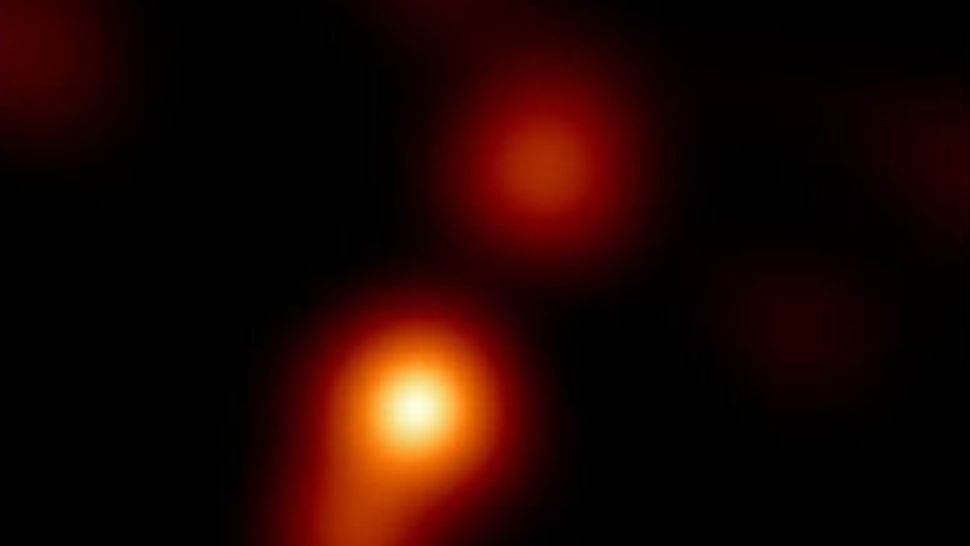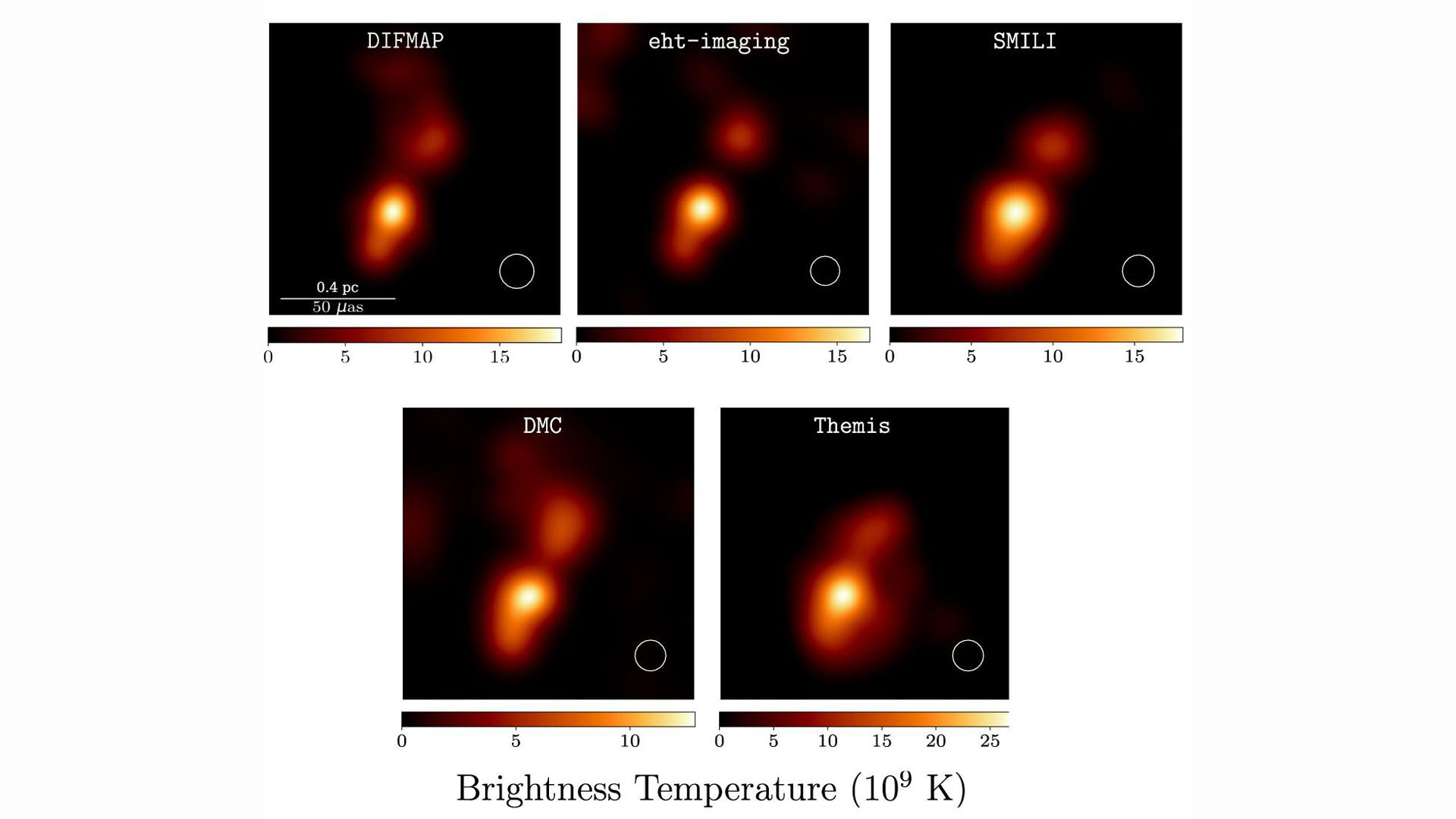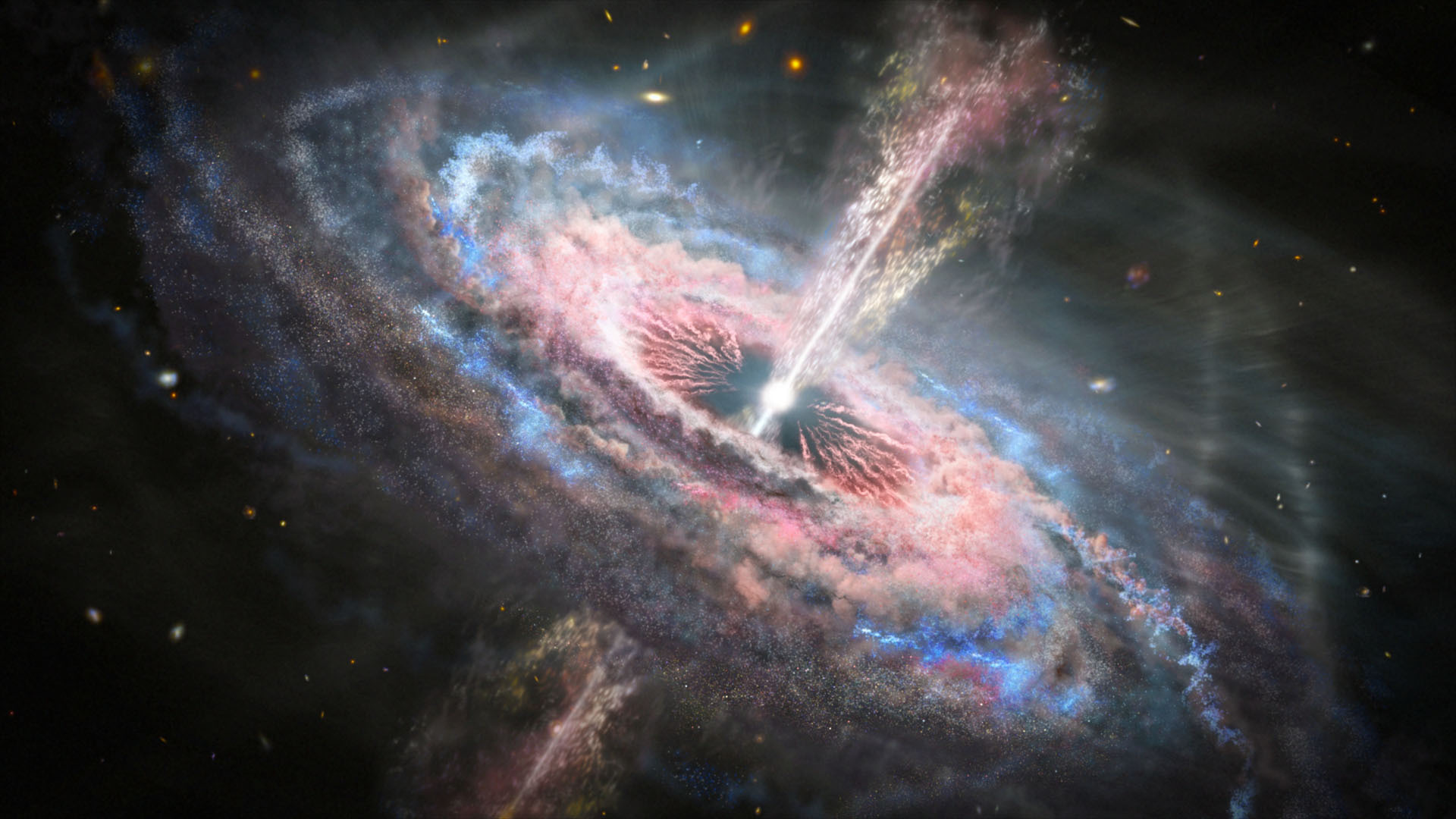22.02.2023
Quasars are super bright structures at the center of some galaxies.

A close-up of the black hole at the center of the NRAO 530 galaxy observed by the Event Horizon Telescope.(Image credit: Astrophysical Journal)
Astronomers using the Event Horizon Telescope have imaged a quasar at the heart of a distant galaxy that blasts out huge amounts of radiation powered by a feeding supermassive black hole.
These extremely powerful events are often described as the central engines of active galaxies and can emit more light than every star in their home galaxycombined. Yet, scientists still don’t fully comprehend the physics that drive their powerful activity.
This newly imaged quasar lurks at the heart of the galaxy NRAO 530 and was captured by the Event Horizon Telescope (EHT), which is famous for producing the first image of a black hole in 2019. The EHT collaboration team followed up this image of the supermassive black hole at the heart of the galaxy Messier 87(M87) with an image of Sagittarius A* (Sgr A*), the Milky Way's own supermassive black hole, in May 2022.

Images of a black hole powering a distant quasar taken by the Event Horizon Telescope. (Image credit: Astrophysical Journal
The recently published observation, however, is special because it was made in April 2017, before the EHT saw either M87's black hole or Sgr A*, as the space-based telescope was observing NRAO 530 to calibrate in preparation to observe the black hole at the heart of our galaxy.
"It's also the most distant object that we have imaged with the EHT so far," EHT collaboration team member and Planck Institute for Radio Astronomy researcher Maciek Wielgus said in a statement(opens in new tab). "The light that we see traveled toward Earth for 7.5 billion years through the expanding universe, but with the power of the EHT we see the details of the source structure on a scale as small as a single light-year."
How black holes light up their galactic homes
Black holes themselves don’t emit light and actually capture light behind a one-way surface called an event horizon, so it may seem strange that they can power such a luminous phenomenon.
Quasars are powerful sources of radiation because the powerful gravitational influence of their central black holes, which can be millions or even billions of times more massive than the sun, accelerates material to near-light speed and heats it. This causes quasars to brighten violently, but this isn’t the only source of radiation from quasars.
These black holes greedily feed on the material that surrounds them, but not all of this material falls past the event horizon. The magnetic fields of quasars also funnel particles to the poles of their supermassive black hole components. Here the particles are collimated into bright, thin, jets that blast out at nearly the speed of light. These jets can stretch out from quasars for hundreds of thousands of light-years. Quite how the magnetic fields of quasars form these jets is shrouded in mystery.
The quasar at the heart of NRAO 530 is also classified as a blazar, a type of quasar that is orientated in such a way that the jets it blasts out are pointed directly at Earth.
The EHT looked at this quasar in polarized and unpolarized light allowing the researchers to investigate the magnetic field structure in the vicinity of the black hole and the innermost part of the jet. This revealed a bright feature located on the southern end of the jet that is associated with a core from which the jet starts.
This core has a sub-structure that can only be broken down and resolved at short wavelengths, the brightness of which suggests the energy of the jet is dominated by the magnetic field.

Quasars are the most luminous objects in the universe. (Image credit: NASA, ESA and J. Olmsted (STScI)
The jet also includes two features that are orientated at a right angle and parallel to the jet itself. This indicated to the team that the magnetic field of the jet has a helical structure.
"The outermost feature has a particularly high degree of linear polarization, suggestive of a very well-ordered magnetic field," EHT collaboration team member and Boston University senior scientist, Svetlana Jorstad, said in the statement.
EHT collaboration will continue to study the quasar so they can better understand how the innermost jet features and their connection to the production of high-energy photons change over time.
The research is documented in a paper published in The Astrophysical Journal.
Quelle: SC
